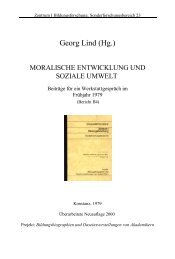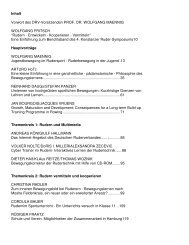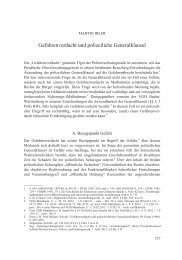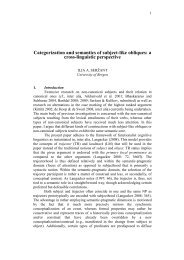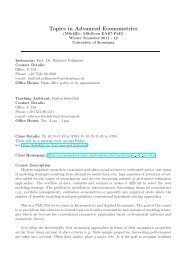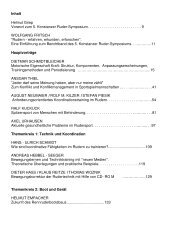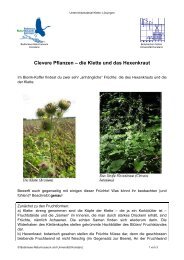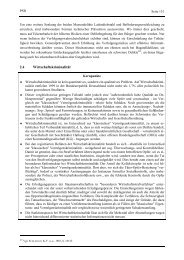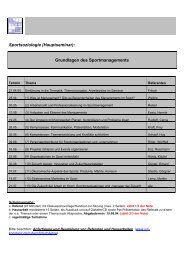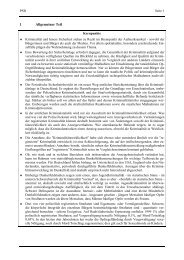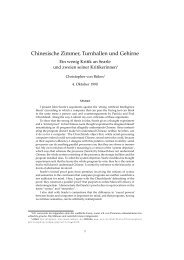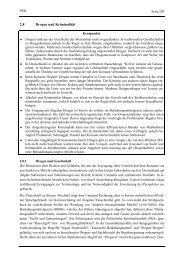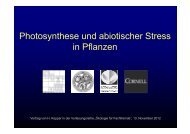Book of Abstracts Book of Abstracts - Universität Konstanz
Book of Abstracts Book of Abstracts - Universität Konstanz
Book of Abstracts Book of Abstracts - Universität Konstanz
Create successful ePaper yourself
Turn your PDF publications into a flip-book with our unique Google optimized e-Paper software.
B - 43<br />
88<br />
Deposition <strong>of</strong> Magic Silicon Clusters<br />
Rainer Dietsche, Felix von Gynz-Rekowski, Dong Chan Lim, Nils Bertram, Tim Fischer,<br />
Ignacio Lopez-Salido, Young Dok Kim, and Gerd Ganteför<br />
Fachbereich Physik, <strong>Universität</strong> <strong>Konstanz</strong>, 78457 <strong>Konstanz</strong>, Germany.<br />
http://www.clusterphysik.uni-konstanz.de/<br />
Since the discovery <strong>of</strong> the “supermagic” cluster C60 [1] researchers are fascinated by the<br />
possibility to synthesize new materials consisting <strong>of</strong> stable clusters. Aiming this question we are<br />
investigating small Silicon clusters and evaluating whether these clusters might be suitable as<br />
building blocks for cluster materials. Previous studies on mass-selected cluster anions <strong>of</strong> Silicon<br />
suggests, that clusters containing 4, 6, 7, and 10 Silicon atoms are closed-shell species with<br />
band gaps <strong>of</strong> 1 to 1.5 eV [2][3] indicating relatively inert and stable properties <strong>of</strong> these clusters.<br />
In our experiment “magic” Silicon clusters Si4 and Si7 are produced by a magnetron sputter<br />
source, mass selected and s<strong>of</strong>t landed (Ekin ≤ 0.3 eV/atom) on Highly Oriented Pyrolytic<br />
Graphite (HOPG), amorphous Carbon and Silver. The deposited clusters are studied via<br />
Ultraviolet Photoelectron Spectroscopy (UPS), X-Ray Photoelectron Spectroscopy (XPS), Low<br />
Energy Electron Diffraction (LEED), Auger Electron Spectroscopy (AES) and High-Resolution<br />
Electron Energy Loss Spectroscopy (HREELS). The results are compared to those <strong>of</strong> “nonmagic”<br />
clusters like Si8 and Silicon bulk.<br />
The experimental data indicates that “magic” Silicon clusters do not form bulk material upon<br />
deposition whereas Silicon monomers show bulk like electronic structures. Furthermore the<br />
deposited clusters show no significant reactivity towards Oxygen. However, additional<br />
measurements have to be made.<br />
References<br />
[1] H. W. Kroto, J. R. Heath, S. C. O’Brien, R. F. Curl, and R. E. Smalley, Nature 318, 162 (1985).<br />
[2] O. Cheshnovsky, S. H. Yang, C. L. Pettiette, M. J. Craycraft, Y. Liu, and R. E. Smalley, Chem.<br />
Phys. Lett. 138, 119 (1987).<br />
[3] J. Müller, B. Liu, A. A. Shvartsburg, S. Ogut, J. R. Chelikowsky, K. W. M. Siu, K.-M. Ho, and G.<br />
Ganteför, Phys. Rev. Lett. 85, 1666 (2000).



